#recognize barcode from image
Explore tagged Tumblr posts
Text
Door Number Three

Pairing: Ghostface x College!Student Reader, you guessed it, college au.
Requested?: no
Rating: R
Warnings/Tags: stalking (its ghostface), eventual smut
Summary: Y/n makes out with a random guy at a party. A week later someone in her class asks her out only to not show up. Who sent her the picture of herself?
please reblog and comment. Not only does it help blogs grow but it helps fanfiction grow and builds community <33
~~~~
Lively voices buzz all around me. Different types of conversations being held, how someone's day was going, what their parents said to them. Friends catching up, department faculty sitting with each other. The cafeteria is alive with chatter.
Standing at the end of the line, my hangover is thanking the universe that the line isn't that long. I recognize some of the faces in the line in front of me from the party last night. Dozens of drunken flashbacks play in my head all at once like a burst of ink on a page. My fingers ghost over my lips as one flashback in particular sticks out. My lips on some guy's neck. Did I make out with a total stranger? I try to focus my attention on recalling his face but..
"It's ready for ya" the cashier at the counter, her short brown hair is worn in a hairnet today, interrupts my internal investigation. I pull my I.D. out of my wallet and scan it in front of the small barcode scanner. I walk further into the cafeteria. My dry bloodshot eyes lock onto the familiar sight, the grill area. 'Fries. I need fries. French fries will fix me.'
It feels like my rumbling stomach is in charge of my feet as I stumbled a few steps forward, toward the plate stacks on a shelf beneath the dishes of food being served. After stacking my plate in golden, crisp, deliciousness I cross the cafeteria to the drink machine. I get my favorite soda and a seat at a table in the back half of the room, where there's less people. Natural light from the windows warms the tables surrounding them. My shorts do nothing to save me from the shock of the cold chair assaulting the backs of my thighs. Quickly I cross my left leg over the right to warm myself. The salt shaker on this table is almost empty, the remaining salt grains clang as the shaker is put back down to rest in front of me. My phone vibrates in my pocket. From the lock screen the notification is an image text from some random number. Assuming it's from a campaign or mailing list I forgot I signed up for, my thumb slides up my lock screen. Clicking on the text with the only subject being the word "image" in italics.
*bzzt bzzt*
"this u?"
Food gets caught in my throat, my chest instantly fills with air. My nose takes a deep breath in, the different smells mixing in the air. I take a deep drink to wash down the food I'm trying desperately not to choke and die on.
The picture that was sent is a selfie of the guy whose face I couldn't remember until now, myself, and our tongues down each other's throat. There's a mask pushed to the top of his head, sticking to his pale forehead with beads of sweat. Medium length black hair that's hidden behind the back of the mask. As far as his costume goes it's just black.. Well this just got either really creepy or really hot.
I respond. "Are you the guy in the photo?"
"so it is you"
"who are you?"
A grey box pops up into the chat with a loading circle in the middle. The grey fades to color, a girl sitting by self in front of a window, in a crowded room. Wearing a burgundy shirt and grey shorts, hunched over her plate and phone. I look down, its my clothes. That's me in the picture.. right now. My head shoots up, my eyes scanning everyone in the cafeteria. Their facial expressions, who is sitting in front of me, who they're sitting with, what tables are empty.
'Should I go to the police? Is this serious or is this a prank? I don't remember giving this guy my number..' Out of the corner of my eye, a small bubble with three bouncing dots appears above my keyboard. "See you soon bunny🫀🐇"
If this is a prank, I don't like it. And if it's not a prank... I refuse to let this fuck up my day right now, I have a test tomorrow I need to study for. Then I can move this morning on to the long list of things in the last 24 hours I can't or refuse to remember.
Promises, promises..
~~~~
My head hurts and my throat is so dry it feels like I swallowed sand. Every joint aches, my stomach is like a hornet's nest in a duffle bag that was dragged behind a truck. I wanted to skip class so bad, despite the fact that I got up, made myself get dressed and reminded myself that I studied hard the past few days, and I memorized the material well. I see no reason why I would do bad on this test. Also because I'll hate myself if my hard work isn't paid off. The test is over and I'm blissfully on my way to collapse in my bed, someone in hallway calls my name. I stop in the stairwell, turning to look behind me. He's medium height, a dark green shirt that rests over the grey sweat pants he's wearing. Lucky. My sweatpants are dirty. I don't remember where they sit but his voice is one I recognize as someone who sits behind me. He follows the crowd of people from the class room down the stairs although he stops in front of me. "Its uh Y/n? Right?"
"Yeah," Sticking my hand out in front of me, his large hand covers mine when he grasps it for a handshake. "I'm Wayne, I sit behind you. How did you think you did on the test?"
"I'm glad it was easy, I don't know if my brain could've handled one more four paragraph discussion over the same three things we discuss every class because this guy can't move on from the French Revolution." I shift my weight from foot to the next, turning my attention to Wayne.
"I know right? I checked the syllabus, we're supposed to be learning about the industrial era by now. I mean dude, come on." I chuckle at what he said, taking in his features. Tall with high cheek bones, a five o'clock shadow that frames his jaw nicely. Brown eyes, warm smile, long curly brown hair falls below his collarbone. He's cute.
"I've uh, always wanted to tell you, I like your style. The way you dress is really cool. Uh, maybe we could get to know each other over coffee sometime? We could talk about music, or books."
My face is hot and red, blood is rushing everywhere making everything warm and clammy. The one day I look and feel like shit is when I get asked out? I'm not sure if I should be flattered or insulted. "Yeah, I'd like that."
"Does The Better Blend tomorrow at 2 work for you?" I nod dumbly, trying not to smile like an idiot. "Yes, it does. Uh im sorry but I've really gotta get goin, can I give you my snapchat real quick?"
~~~
It's 2:15 and Wayne is nowhere to be found. I text him and wait for a response.
3:00 pm, still nothing and he's leaving me on delivered.
9:00 pm. Dean Winchester is fighting vampires on my tv. Sam is somewhere out of frame getting his ass kicked.
"Ever hear back from the guy that stood you up?"
"Nope." popping the 'p'. I looked at my friend, Reggie, next to me, I called him over to do homework together and keep my mind off my shitty day.
"I'm sorry. Maybe it was for the best." My back is greeted by his big warm hand rubbing in circles. "Probably." I sigh. We work on homework together sitting on my bed for another hour. I stretch my arms up and out, my mouth gapes and I suck in air in a surprise yawn. "Wanna take a break and watch RuPaul's Drag Race?"
"Fuck yes." I giggle. The floor is cold as I stand to put mine and Reg's laptops on my desk. Crawling back in bed I switched from Netflix to Paramount +.
~~
1:15 am, I crawled in bed thirty minutes ago and I can't calm down enough to wind down. My heart feels all swirly. The nightstand next to me vibrates as my phone lights up. A text. Oh joy.
"poor bunny a little birdie told me you got stood up"
I groan, a soft thud sound echoes around my ears as my head deadweights with a whump into the pillow.
"what do you want dude"
"what do i want?"
"i want to play a little game called.."
"guess which room im in"
83 notes
·
View notes
Text
Week 08 | 14Mar. 24
What was planned this week
Photography and selection of appropriate images for articles
What actually happened
Identity (Logo development)
Booklet design
Instagram posts development
blog development
The results

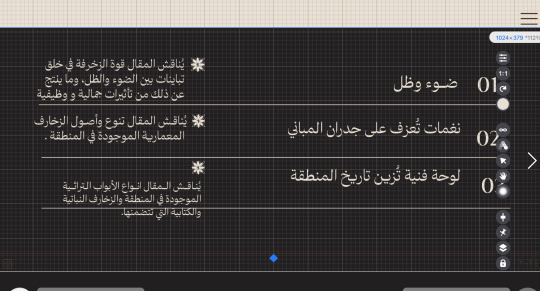
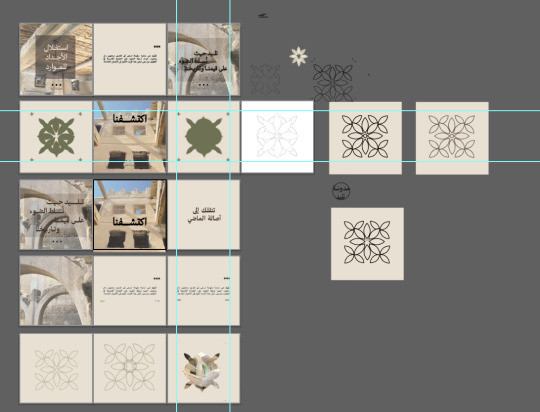

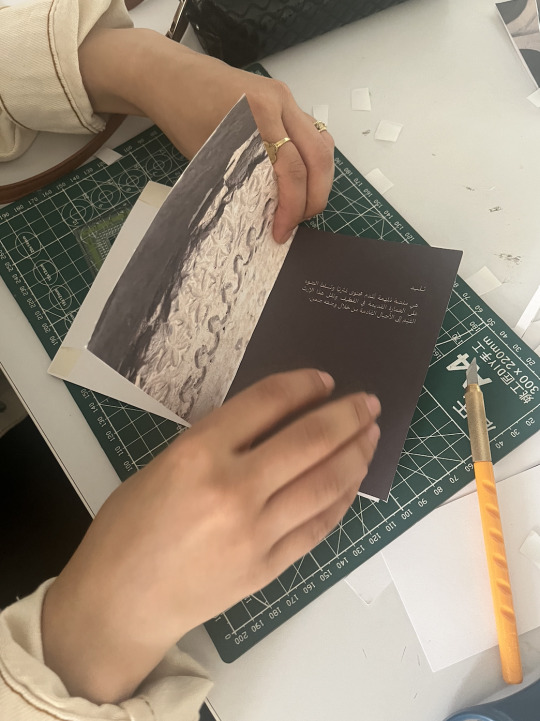


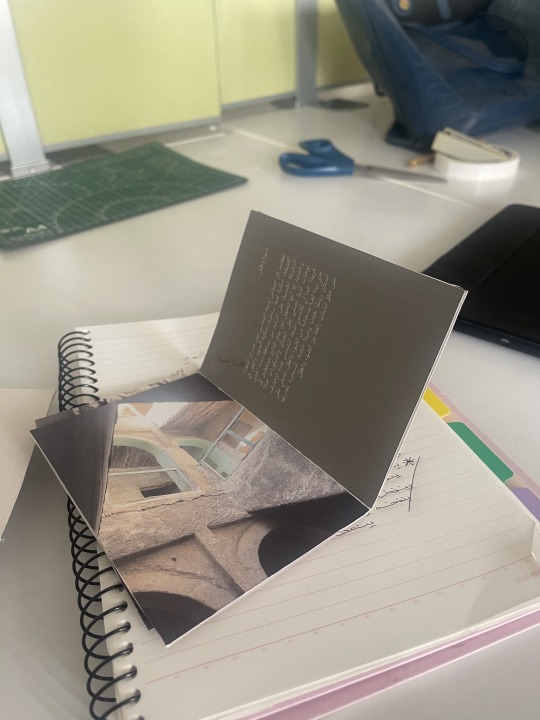
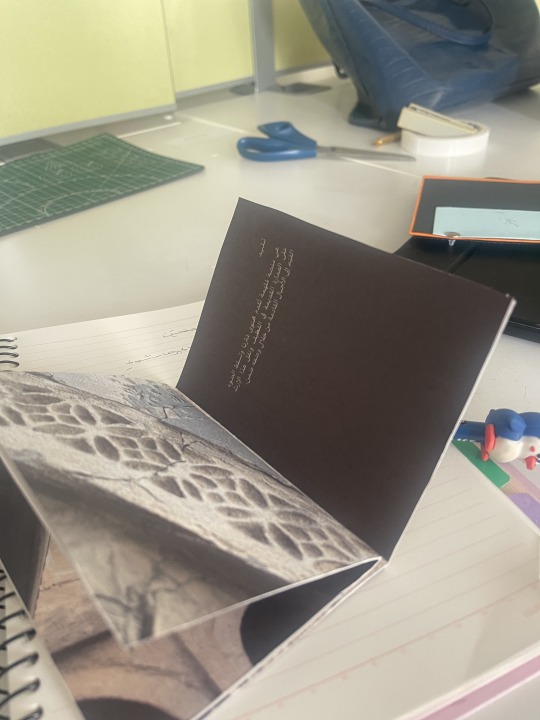
My reflection:
This week has been a whirlwind of productivity and creativity as I delved deep into refining my project. With a focus on improving the digital interface and bolstering communication through social media platforms, I embarked on a journey of enhancements that would elevate the project's visibility and engagement.
One of the pivotal changes I made was a subtle yet impactful tweak to the logo. By adjusting the thickness of the letters and fine-tuning the "x height," I achieved a newfound balance that resonated with the project's essence. It's remarkable how such small adjustments can make a significant difference in perception and recognition.
In tandem with refining the visual identity, I honed the content strategy for Instagram posts. Drawing from invaluable feedback from jury members, I fine-tuned the messaging to captivate the audience and foster meaningful interactions. The result was a palpable increase in engagement, reflecting the resonance of the content with the target audience.
Recognizing the importance of accessibility, I embarked on developing a mobile version of the blog. This initiative aimed to cater to the diverse preferences and habits of readers, ensuring a seamless and enjoyable reading experience on mobile devices.
Turning my attention to the upcoming exhibition, I began meticulously crafting a brochure that would serve as a comprehensive showcase of the project's journey and achievements. From selecting compelling content to integrating interactive elements such as a barcode linking to the blog, every detail was thoughtfully curated to captivate and inform the audience.
To complement the brochure, I conceptualized and designed a bespoke envelope that not only encapsulated the project's identity but also served as a beacon of attention amidst the exhibition hustle. This attention to detail underscores my commitment to leaving a lasting impression and sparking curiosity among visitors.
As I reflect on the strides made this week, I am filled with a sense of accomplishment and anticipation for the impact these enhancements will have on the project's trajectory. Each iteration brings me closer to realizing the vision I set out to achieve, reaffirming the power of dedication, creativity, and strategic thinking in driving meaningful change.
3 notes
·
View notes
Text
Fruits Dataset for Classification: Training AI to Recognize Fruits
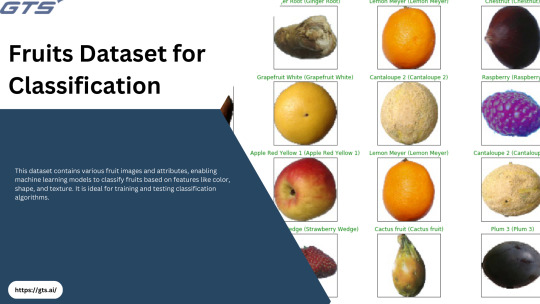
Introduction
In the era of artificial intelligence, image classification has emerged as an essential activity, particularly in sectors such as agriculture, healthcare, and retail. A prominent and intriguing application of image classification is the recognition of fruits. Through the training of machine learning models on a meticulously organized dataset, AI can effectively identify various fruit types based on their visual features.
For those interested in delving into fruit classification, the Fruits Dataset for Classification serves as an outstanding foundation. This blog will explore the significance of fruit classification, the organization of the dataset, and the methods for utilizing it to train an AI model.
Why Fruit Classification Matters?
The classification of fruits through artificial intelligence presents numerous practical applications, including:
Automated Quality Control: The sorting and grading of fruits within the agricultural and retail sectors.
Intelligent Checkout Systems: Self-checkout kiosks powered by AI that can identify fruits lacking barcodes.
Health and Nutrition Applications: The capability to recognize fruits in applications designed for diet tracking.
To ensure precise classification, it is essential to have a high-quality dataset that offers a varied collection of fruit images accompanied by labeled categories.
Overview of the Fruits Dataset for Classification
The Fruits Dataset for Classification has been developed to assist artificial intelligence and machine learning models in recognizing and classifying different varieties of fruits based on their visual characteristics. This dataset comprises:
High-resolution images of various fruit types Labeled categories for supervised learning Varied backgrounds to enhance model robustness RGB color features to facilitate better differentiation among fruits
The dataset is available for download via this link and can be utilized for model training.
How to Train an AI Model Using This Dataset
To categorize fruits utilizing this dataset, adhere to the following procedures:
1. Acquire and Organize the Dataset
Begin by downloading the dataset from the provided link and extracting the images into organized folders, ensuring that each fruit category has its own directory.
2. Data Preparation
Adjust the images to a consistent size (for instance, 224x224 pixels).
Standardize pixel values to enhance the model's performance.
Divide the data into training, validation, and test sets, typically following an 80-10-10 distribution.
3. Develop a Classification Model
Employ machine learning or deep learning methodologies such as:
CNN (Convolutional Neural Networks) for precise image classification.
Utilize pre-trained models like MobileNet, ResNet, or VGG16 to reduce training duration.
4. Train and Assess the Model
Implement a loss function such as categorical cross-entropy for multi-class classification.
Utilize an Adam optimizer for optimization and assess performance through accuracy metrics.
5. Implement the Model
After training, implement the model for real-time fruit classification through web applications, mobile apps, or embedded systems.
Conclusion
The Fruits Dataset for Classification serves as an essential resource for training artificial intelligence models to identify various types of fruit. By employing appropriate preprocessing techniques, selecting suitable models, and utilizing effective training strategies, one can create a precise fruit classification system applicable to numerous real-world scenarios.
Are you prepared to begin? Download the dataset now from Globose Technology Solutions and start developing your AI-driven fruit classifier today!
0 notes
Text
apply for barcode
How to Apply for a Barcode
Applying for a barcode is a straightforward process that businesses must complete in order to obtain a unique identifier for their products. Barcodes are essential for product tracking, inventory management, and sales transactions, and having one allows your product to be recognized universally in retail and supply chain systems. Below are the key steps involved in applying for a barcode.
1. Determine the Type of Barcode You Need
There are different types of barcodes, such as UPC, EAN, and GS1, and each serves different purposes. When applying for a barcode, it's important to choose the correct type based on the following considerations:
Retail Products: UPC barcodes are the most commonly used for retail products in the U.S. and Canada.
International Sales: If you're selling products globally, an EAN (European Article Number) barcode may be more appropriate.
Traceability Needs: For industries like healthcare or food safety, a GS1 barcode might be necessary due to its ability to store additional product information such as expiration dates or batch numbers.
2. Register with a Barcode Authority
To apply for a barcode, businesses must typically register with a barcode authority, which is an organization responsible for assigning unique barcode numbers. This registration ensures that your barcode number is unique and will not conflict with those of other companies.
For example, the GS1 organization is the global entity that manages barcode standards. They issue a unique identification number, which you can then use to create your product barcodes.
Registering with the barcode authority will usually involve providing details about your business and the types of products you sell.
3. Obtain a Company Prefix
Once you've registered with the barcode authority, the next step is to obtain a company prefix. This prefix is a unique identifier assigned to your business. The company prefix forms the first part of your barcode and is used to distinguish your products from others.
The length of the company prefix varies depending on the number of products your business offers. Larger businesses may need a longer prefix to accommodate a large number of product variations, while smaller businesses with fewer products may receive a shorter prefix.
4. Assign Product Numbers
After receiving your company prefix, you'll need to assign a unique product number to each product or variation. This number is the second part of the barcode and distinguishes each individual item. Depending on your barcode authority’s guidelines, the product number might be anywhere from 5 to 8 digits.
Make sure that each product, including different sizes or variations, has a distinct product number. This ensures that each product can be uniquely identified and tracked.
5. Generate the Barcode Image
With your company prefix and product number, you can now generate the actual barcode image. There are various tools available that can convert the numerical barcode information into a machine-readable barcode graphic.
At this stage, you may use barcode generation software or services that allow you to input your product numbers and company prefix, then automatically create barcode images for each product. These images can be printed on product packaging or labels.
6. Test the Barcode
Before you begin using your barcode in the market, it’s crucial to test its functionality. Scanning the barcode with a barcode scanner will help ensure that the information is correctly encoded and that it can be read without errors. Testing is especially important if your product is going to be sold in large retail stores, as barcode scanning accuracy is essential for smooth transactions.
7. Print and Apply the Barcode to Your Products
Once you've verified that your barcode works properly, the next step is to print it on your product packaging. The barcode should be placed in a visible and scannable area, ensuring it is easily accessible for checkout systems in stores.
You can print the barcode on labels, tags, or directly onto the packaging. Make sure that the size of the barcode is large enough to be scanned but also complies with industry standards to ensure readability.
8. Maintain Barcode Records
As you expand your product range, you’ll need to continue managing and updating your barcodes. Keep accurate records of the products assigned to each barcode to avoid confusion or duplication. Some barcode authorities may also require annual renewal fees for maintaining your barcode rights, so it's important to stay up-to-date with any administrative requirements.
Conclusion
Applying for a barcode involves registering with a barcode authority, obtaining a company prefix, assigning unique product numbers, and generating and printing barcode labels. By following these steps, businesses can ensure their products are easily identified and tracked throughout the supply chain and retail environments. Having a barcode is essential for enhancing operational efficiency, improving inventory management, and facilitating smoother transactions, particularly for products sold in stores or internationally.
0 notes
Text
Autofocus USB Cameras in Kiosks: Real-Time Focus Adjustment for Seamless Customer Engagement
Have you ever stood at a self-service kiosk, trying to interact with the screen, but finding the image blurry or the text hard to read? It’s frustrating, isn’t it? Whether you're making a quick purchase, checking in for a flight, or simply retrieving information, every second counts when using a kiosk. The challenge often lies in blurry or misaligned camera focus, leading to errors, delays, and ultimately a frustrating user experience.
This is where Autofocus USB cameras step in. Imagine a kiosk that automatically adjusts its camera to your exact needs—every time—ensuring clear, precise interactions that keep customers engaged and satisfied. Let’s dive into how Autofocus USB cameras can solve these pain points and revolutionize the way kiosks function.
Understanding the Challenges in Kiosk Interactions
Self-service kiosks have become a staple in industries ranging from retail to hospitality, offering customers a streamlined, efficient way to access services. However, for these kiosks to be truly effective, they must be responsive and accurate. A key component of this accuracy is the camera technology used within the system.
When kiosks use static-focus cameras, there is often a mismatch between the camera's preset focal length and the user's position, especially in dynamic environments where users approach the kiosk from varying angles or distances. This leads to blurry images, slow recognition times, and a general lack of reliability, all of which frustrate customers.
Additionally, in kiosks where users interact with ID scanners, payment systems, or facial recognition technology, image clarity is crucial. Without the ability to adjust focus in real time, the camera may fail to capture the correct image, resulting in delays or errors that disrupt the user experience. This not only annoys customers but can also lead to inefficiencies and increased operational costs for businesses.
How Autofocus USB Cameras Solve These Issues
1. Real-Time Focus Adjustment for Accuracy The most significant benefit of Autofocus USB cameras in kiosks is their ability to automatically adjust focus in real time. This means the camera will continuously adapt to the user’s position and environment, ensuring that the image is always sharp and clear, regardless of how far or close a person is to the kiosk.
This adaptability solves one of the biggest pain points—users no longer have to wait for the camera to refocus or deal with blurred images. The camera recognizes the user’s movements and adjusts instantly, providing a smooth, continuous interaction that feels intuitive and seamless.
2. Enhanced User Experience and Engagement An Autofocus USB camera enhances customer engagement by providing immediate feedback. Whether it’s facial recognition for identification, scanning of QR codes, or simply reading documents, these cameras ensure that the image is clear, allowing the system to operate with precision. For customers, this translates to faster, more reliable service, and a smoother experience overall.
This real-time focus adjustment can also be beneficial in environments like retail, where customers may be interacting with touchscreens, selecting items, or even using the kiosk to place orders. The clear, sharp images created by the autofocus camera enhance the interface’s usability, which encourages customers to spend more time using the kiosk and return to it again in the future.
3. Reducing Errors and Delays Errors and delays caused by misfocused cameras can be costly for businesses, leading to frustrated customers, longer waiting times, and even missed transactions. Autofocus USB cameras eliminate these issues by ensuring that every image is captured in the correct focus, preventing mistakes before they happen.
For kiosks that rely on document scanning or barcode reading, autofocus cameras can make a world of difference. In traditional static-focus systems, an incorrectly focused image could mean the system doesn't recognize a barcode or ID, forcing customers to repeat the process. Autofocus technology automatically adjusts to capture the perfect image, reducing error rates and improving the overall speed of service.
4. Improved Versatility Across Different Kiosk Applications Autofocus USB cameras offer greater versatility across a range of kiosk applications. From retail and banking to healthcare and ticketing, these cameras can be adapted to meet the needs of various industries. For example, in healthcare kiosks, they can be used for accurate scanning of insurance cards, medical records, or even patient facial recognition. In retail, they can assist in scanning items, processing payments, or verifying ID cards for age-restricted products.
Because the autofocus system can adjust to a variety of input types and scenarios, businesses can use the same camera model across multiple kiosk applications without compromising on quality or functionality. This scalability is particularly useful for companies looking to standardize their kiosk solutions across different locations or departments.
5. Seamless Integration with Existing Kiosk Systems Autofocus USB cameras are designed to be easily integrated into existing kiosk systems. This means businesses don’t need to invest in entirely new setups or overhaul their current technology. The plug-and-play functionality of USB cameras makes them simple to deploy and connect with existing software systems, saving time and reducing implementation costs.
With minimal setup required, businesses can rapidly upgrade their kiosk solutions, enhancing customer service without disrupting ongoing operations. Additionally, many Autofocus USB cameras come with advanced features like low-light performance and enhanced resolution, making them suitable for a wide range of environments, from dimly lit areas to brightly lit spaces.
Maximizing the Benefits of Autofocus USB Cameras in Kiosks
1. Boosting Customer Satisfaction Ultimately, the integration of Autofocus USB cameras in kiosks leads to a noticeable improvement in customer satisfaction. When customers know that they can rely on clear, fast, and accurate interactions at kiosks, they are more likely to return to them in the future. The frustration of blurry or misaligned images is eliminated, and customers are empowered to complete their tasks efficiently.
2. Improving Operational Efficiency For businesses, the investment in Autofocus USB cameras translates into better operational efficiency. With fewer errors and faster processing times, employees can focus on more value-added tasks, reducing the need for manual intervention and increasing overall productivity.
The automation and accuracy of Autofocus cameras also ensure that kiosks require less maintenance, leading to reduced downtime and lower long-term costs. Furthermore, businesses can confidently rely on their kiosks to handle a greater volume of transactions, improving their capacity to serve customers.
Elevating Your Kiosk Solutions with Autofocus USB Cameras Incorporating Autofocus USB cameras into your kiosk systems isn’t just a technological upgrade—it’s a step toward transforming your customer service experience. By enhancing image quality, reducing errors, and providing real-time focus adjustment, these cameras are key to driving greater engagement and satisfaction. Whether you’re operating a retail, healthcare, or hospitality kiosk, Autofocus USB cameras can help you deliver precision, reliability, and a seamless user experience that keeps your customers coming back.
0 notes
Text
5G Networks: Leveraging USB 3.0 Camera Capabilities

As 5G networks begin to take center stage, businesses across industries are looking for ways to harness this lightning-fast connectivity. But what role do USB 3.0 cameras play in this new age of communication? How can their capabilities be leveraged to unlock faster, more efficient systems? The answer lies in understanding the power of 5G and how it can supercharge your camera technology for innovative applications.
Let’s dive into how 5G is changing the game and how USB 3.0 cameras are poised to take advantage of these advancements to meet the ever-growing demands of industries like healthcare, retail, industrial automation, and more.
The Power of 5G Networks: Transforming Industries
5G networks promise to deliver ultra-fast speeds, lower latency, and the ability to connect millions of devices simultaneously. For businesses, this means faster data transfer, real-time decision-making, and the ability to implement IoT (Internet of Things) solutions with ease. But it’s not just about speed — it’s about a new era of connectivity that offers countless opportunities for innovation.
As more and more businesses shift to 5G, industries are recognizing how USB 3.0 cameras, known for their high-definition video quality and fast data transfer capabilities, can provide a competitive edge. From streaming real-time video feeds to enabling automated systems in production lines, these cameras are becoming essential components in the digital transformation journey.
But what’s the true potential? How exactly does a USB 3.0 camera harness 5G’s capabilities to drive smarter, more efficient operations?
Enhancing Remote Collaboration and Telemedicine
In industries like healthcare, where real-time communication is critical, 5G networks and USB 3.0 cameras are proving to be a game-changer. The combination of ultra-fast internet speeds and high-definition video allows healthcare professionals to conduct remote consultations and even perform tele-surgery with the clarity and precision needed for successful outcomes.
Doctors and medical teams can now use USB 3.0 cameras to stream high-definition video feeds, making telemedicine more reliable and effective. This high-quality imaging capability ensures that physicians have the necessary visual context to diagnose and recommend treatments, while 5G connectivity ensures these feeds are transmitted with little to no delay.
For patients, this means access to better care, no matter their location. USB 3.0 cameras, paired with 5G, enable remote monitoring and consultations to occur in real-time, which can dramatically reduce waiting times for patients in rural or underserved areas.
Optimizing Retail and Customer Engagement
In retail, customer experience is everything. Businesses are now using USB 3.0 cameras to enhance self-service kiosks, monitor customer traffic, and even track product interactions. With the advent of 5G networks, these cameras can transmit large volumes of data seamlessly, allowing for smoother interactions and faster processing.
For example, consider the scenario of a customer at a self-checkout kiosk. As they scan items, USB 3.0 cameras can instantly capture the barcodes, while 5G ensures that the data is sent in real-time to the store’s system, triggering immediate transactions and alerts. The combination of high-definition cameras and ultra-low-latency networks ensures that the customer experience is fast, efficient, and error-free.
Additionally, retail stores can use real-time video analytics powered by USB 3.0 cameras to gain insights into customer behavior. With the speed of 5G, these data points can be analyzed in near real-time, helping businesses adjust their marketing strategies and operational workflows to boost sales and improve customer satisfaction.
Revolutionizing Industrial Automation
In industrial environments, speed and precision are critical. Manufacturing plants and warehouses are increasingly relying on automated systems, where USB 3.0 cameras play a vital role in quality control and process monitoring. The combination of high-definition video capture and real-time data transmission allows businesses to detect errors, adjust production lines, and maintain quality at every step of the process.
With 5G networks, industrial operations can be streamlined even further. Imagine a production line where every item is inspected by USB 3.0 cameras for defects. With 5G, the high-definition video feeds captured by these cameras can be analyzed in real-time, with machine learning algorithms flagging issues immediately. This reduces downtime, enhances efficiency, and helps companies deliver higher-quality products.
Moreover, the ability to integrate USB 3.0 cameras with other IoT devices over 5G networks opens up possibilities for even more advanced automation. Systems can self-adjust in real time, improving workflow efficiency and minimizing human intervention.
Enabling Smart Cities and Security Solutions
The rise of smart cities presents another opportunity to leverage the combined power of 5G and USB 3.0 cameras. Urban areas can now deploy thousands of cameras to monitor traffic, track criminal activity, or ensure public safety. USB 3.0 cameras, known for their high resolution and fast data transmission capabilities, are the perfect fit for these large-scale, data-heavy projects.
With 5G networks, these cameras can transmit data instantaneously, feeding live video streams to city officials or security personnel. In the case of a traffic incident or emergency, USB 3.0 cameras can provide high-quality video feeds that help responders make faster, more informed decisions.
In addition, the real-time monitoring provided by USB 3.0 cameras over 5G networks can be integrated with other smart city technologies, such as AI-powered facial recognition or vehicle identification systems. This allows cities to enhance security while reducing response times and increasing overall public safety.
Maximizing Performance and Efficiency with USB 3.0 Cameras and 5G
For businesses looking to implement USB 3.0 cameras and 5G technology, the advantages are clear: enhanced speed, seamless data transfer, and the ability to make faster, more informed decisions. However, implementing these technologies requires careful planning and the right equipment.
To get the most out of USB 3.0 cameras in a 5G-powered environment, businesses need to ensure they have the right camera models with high-definition resolution and fast data transfer capabilities. Cameras with features such as autofocus, wide dynamic range, and low light sensitivity will ensure clear, detailed images regardless of the lighting or environment.
Moreover, it’s essential to have a network infrastructure that can support the high demands of 5G. Businesses should work with a provider who can help integrate USB 3.0 cameras into their 5G solutions, ensuring smooth, reliable operation.
Your Next Step in Leveraging USB 3.0 Cameras
Are you ready to take advantage of the powerful synergy between 5G networks and USB 3.0 camera technology? If you're looking to implement these solutions into your business, it's time to start with the right products. Learn more about how USB 3.0 cameras can revolutionize your operations and accelerate your digital transformation journey. Whether you're enhancing telemedicine capabilities, improving retail checkout processes, or upgrading industrial automation, our cameras are designed to meet the high demands of 5G networks.
0 notes
Text
Amazon Fire Phone: The Most Hated Smartphone Ever Despite Having Some Unique Features.
In 2014, Amazon made a bold move to enter the highly competitive smartphone market with the Amazon Fire Phone. Armed with innovative features and deep integration with the Amazon ecosystem, the Fire Phone seemed poised for success. However, despite its potential, the Fire Phone became one of the most criticized tech products of the decade, leading Amazon to discontinue it less than a year after launch. This blog explores why the Fire Phone failed and the lessons it offers for tech innovation.

Aiming High: The Amazon Fire Phone’s Standout Features
Amazon didn’t hold back when it launched the Fire Phone. It introduced cutting-edge, novel features that were unique at the time, designed to distinguish the Fire Phone from iPhones and Android devices.
1. Dynamic Perspective: Perhaps the most ambitious feature, Dynamic Perspective used four front-facing cameras to create a 3D-like effect, responding to the user’s head movements. This allowed for features like tilting the phone to scroll through pages or viewing images from different angles.
2. Firefly Technology: Firefly allowed the phone to recognize objects, music, and even product barcodes through the camera, making it easy for users to identify items and purchase them directly on Amazon. This feature was a powerful integration with Amazon’s shopping ecosystem, positioning the Fire Phone as a seamless shopping assistant.
These features were impressive on paper, but they ultimately fell short of being practical enough to justify the device’s high price and limitations.
Amazon-Centric Design: A Double-Edged Sword
One of the biggest reasons for the Fire Phone’s failure was its overwhelming focus on Amazon’s ecosystem. The Fire Phone ran on a heavily modified version of Android, known as Fire OS, which didn’t support Google’s app ecosystem. This meant users couldn’t access popular apps like Google Maps, YouTube, or Gmail, which are essential for most smartphone users. Instead, users were directed toward Amazon’s own services, such as Prime Video, Kindle, and the Amazon Appstore.
While this Amazon-centered approach aligned with the company’s goals, it made the phone feel restrictive for users accustomed to the flexibility of Android or iOS. The heavy reliance on Amazon’s ecosystem didn’t offer the comprehensive app experience people had come to expect, and it created a barrier for anyone who wanted more than Amazon’s services.
The Pricing Misstep
At launch, the Fire Phone was priced at $199 with a contract, comparable to flagship models like the iPhone 5S and the Samsung Galaxy S5. However, consumers felt that the Fire Phone’s limited features didn’t justify its premium price. While Apple and Samsung were known for high-performance hardware and vast app ecosystems, the Fire Phone seemed to fall short in both areas. This misalignment between price and perceived value was a significant deterrent for potential buyers.
Poor Timing and Fierce Competition
The Fire Phone entered the market during a period of intense competition. By 2014, both Android and iOS had firmly established themselves as the dominant platforms, leaving little room for a new contender. Other companies, like Microsoft with its Windows Phone, struggled for similar reasons. For Amazon, the Fire Phone’s proprietary OS and limited app offerings made it difficult to attract users already invested in other ecosystems.
Amazon also faced challenges in capturing developers’ interest for the Fire Phone. Without popular apps from Google and the lack of developer support for new apps, the Fire Phone’s appeal dwindled even further.
Key Takeaways from the Fire Phone Failure
The Amazon Fire Phone’s downfall provides valuable lessons in product design, user experience, and market strategy:
1. Listen to User Needs: Amazon focused heavily on unique features and ecosystem integration but overlooked basic user needs, such as app variety and flexibility. Understanding what users value most in a product — such as core functionality and app accessibility — can be just as important as introducing innovative features.
2. Balance Novelty with Practicality: While Dynamic Perspective and Firefly were impressive, they didn’t address essential smartphone functions. Balancing innovation with practical usability is crucial in creating a successful tech product.
3. Choose the Right Timing and Ecosystem: Launching in a market dominated by iOS and Android, Amazon’s closed ecosystem approach limited its appeal. New entrants need to offer not only unique features but also compatibility with the established tech ecosystem or provide a clear advantage that users find compelling.
Conclusion: The Legacy of the Fire Phone
Amazon discontinued the Fire Phone less than a year after its launch, marking it as a rare misstep for the e-commerce giant. However, the lessons learned from the Fire Phone were not wasted. Amazon later shifted its focus to more successful ventures like the Kindle and the Echo, which better aligned with user needs and Amazon’s strengths. The Fire Phone stands as a reminder that in tech innovation, understanding user expectations, providing value, and fitting into the broader ecosystem are often more important than novelty alone.
In the end, the Amazon Fire Phone became a cautionary tale for tech companies, underscoring the importance of listening to customers and designing products that offer practical, everyday value.
0 notes
Text
Image Recognition Market Size, Trends, and Business Outlook 2024-2030
The global image recognition market size was valued at USD 53.3 billion in 2023 and is projected to grow at a compound annual growth rate (CAGR) of 12.8% from 2024 to 2030.
This growth is attributed to the increasing volumes of image data, advancements in artificial intelligence (AI) and machine learning (ML), and the growing demand for automation across various sectors are pivotal. In addition, the integration of image recognition in applications such as healthcare, retail, and security enhances operational efficiency and customer engagement. Furthermore, the rise of edge computing and mobile solutions further supports market expansion.
Gather more insights about the market drivers, restrains and growth of the Image Recognition Market
Image recognition technology, powered by machine learning, has been embedded in several fields, such as self-driving vehicles, automated image organization of visual websites, and face identification on social networking websites. One of the most popular applications of image identification is social media monitoring, as visual listening and visual analytics are essential factors of digital marketing. Image recognition is highly used in applications related to safety and security, such as facial recognition used by law enforcement agencies. Furthermore, airports are increasingly using face remembrance technology at security checkpoints.
The growing popularity of high-bandwidth data services and advanced machine learning has led to a higher demand for image recognition technology among people. Establishments in different sectors such as media & entertainment, retail, IT & telecom, and Banking, Financial Services, and Insurance (BFSI) have led to the growing utilization of advanced technologies within their companies, consequently driving the acceptance of image recognition. The system for image recognition assists in recognizing objects, buildings, locations, logos, individuals, and other images. Moreover, advances in image recognition tech enable connecting offline materials such as brochures and magazines with promotional videos, AR experiences, and product details using images from a smartphone.
In addition, an automated system for recognizing images is essential in computer vision, as it can pinpoint an image or attribute within digital photos and videos. It allows users to collect and analyze data in real-time. Information is gathered in complex dimensions and results in numerical or symbolic data. Computer vision, an image recognition component, allows for object recognition, event detection, image reconstruction, learning, and video tracking tasks. Image recognition technology has seen various opportunities arise in areas such as big data analysis and successful branding of products and services, thanks to the expanding use of image databases.
Furthermore, since the database serves as the training material for image recognition solutions, open-source frameworks such as software libraries and software tools form the building blocks of the solution. These frameworks help prepare or train machines to learn from the images available in the database by providing different types of computer vision functions, such as medical screening, obstacle detection in vehicles, and emotion and facial recognition, among others. Some of the leading libraries for image recognition include UC Berkeley's Caffe, Google Tensor Flow, and Torch.
Image Recognition Market Segmentation
Grand View Research has segmented the image recognition market report based on, technique, component, deployment mode, vertical, application, and region.
Technique Outlook (Revenue, USD Million, 2018 - 2030)
• QR/ Barcode Recognition
• Object Recognition
• Facial Recognition
• Pattern Recognition
• Optical Character Recognition
Component Outlook (Revenue, USD Million, 2018 - 2030)
• Hardware
• Software
• Service
• Managed
• Professional
• Training, Support, and Maintenance
Deployment Mode Outlook (Revenue, USD Million, 2018 - 2030)
• Cloud
• On-Premises
Vertical Outlook (Revenue, USD Million, 2018 - 2030)
• Retail & E-commerce
• Media & Entertainment
• BFSI
• Automobile & Transportation
• Telecom & IT
• Government
• Healthcare
• Others
Application Outlook (Revenue, USD Million, 2018 - 2030)
• Augmented Reality
• Scanning & Imaging
• Security & Surveillance
• Marketing & Advertising
• Image Search
Regional Outlook (Revenue, USD Million, 2018 - 2030)
• North America
o U.S.
o Canada
o Mexico
• Europe
o UK
o Germany
o France
• Asia Pacific
o China
o India
o Japan
o Australia
o South Korea
• Latin America
o Brazil
• Middle East and Africa (MEA)
o Saudi Arabia
o South Africa
o UAE
Browse through Grand View Research's Next Generation Technologies Industry Research Reports.
• The global video management software market was valued at USD 9.69 billion in 2023 and is projected to grow at a compound annual growth rate (CAGR) of 19.5% from 2024 to 2030.
• The global 3D Scanning market was valued at USD 3.95 billion in 2023 and is projected to grow at a compound annual growth rate (CAGR) of 9.8% from 2024 to 2030.
Key Companies And Market Share Insights
Some key companies in the image recognition market include Attrasoft, Inc., Blinkfire Analytics, Inc., Kairos AR, Inc., Catchroom, Chooch., Cloudsight, Inc., Google, GumGum, Inc., Hitachi, Ltd.; and others that focus on development with continuous innovations and enhancements.
• Blinkfire Analytics, Inc. specializes in AI-powered visual content analysis for sports, media, and entertainment industries. Blinkfire's proprietary platform uses computer vision and machine learning algorithms to automatically detect, track, and analyze brand exposures, logos, and sponsorships within images and videos, providing valuable insights for brands, teams, and leagues. The company's offerings include sponsorship valuation, brand monitoring, and audience engagement metrics, enabling clients to measure the effectiveness of their marketing efforts and optimize their sponsorship strategies.
• Kairos AR, Inc. provides facial recognition and image analysis solutions, offering products and services that leverage artificial intelligence and machine learning to deliver accurate and efficient image recognition capabilities. Kairos' flagship platform, Kairos Face Recognition, provides real-time facial recognition, identification, and verification, with security, access control, and customer experience applications. The company's other offerings include Kairos Demographics, which analyzes age, gender, and emotions, and Kairos Emotions, which detects and interprets emotional responses. Kairos' solutions are used across various industries, including healthcare, finance, and retail, and are designed to integrate with existing systems and infrastructure, enabling seamless deployment and scalability.
Key Image Recognition Companies:
The following are the leading companies in the image recognition market. These companies collectively hold the largest market share and dictate industry trends.
• Attrasoft, Inc.
• Blinkfire Analytics, Inc.
• Catchroom
• Chooch.
• Cloudsight, Inc.
• Google
• GumGum, Inc.
• Hitachi, Ltd.
• Honeywell International Inc.
• Kairos AR, Inc.
• LTU Tech
• NEC Corporation
• Qualcomm Technologies, Inc.
• DEEPSIGNALS
• Calrifai, Inc.
• Wikitude, a Qualcomm company
Recent Developments
• In April 2023, Chooch launched ImageChat, a solution that enables enterprises to create detailed computer vision models using text prompts. Trained on over 11 billion parameters and 400 million images, ImageChat can identify more than 40 million visual details. This innovative tool offered users to generate captions and keywords for images and videos and interact with visual content to gain deeper insights. Combining AI Vision with large language models, ImageChat enhances data reliability and accuracy, making it ideal for object detection and detailed reasoning applications.
Order a free sample PDF of the Image Recognition Market Intelligence Study, published by Grand View Research.
#Image Recognition Market#Image Recognition Market size#Image Recognition Market share#Image Recognition Market analysis#Image Recognition Industry
0 notes
Text
Image-Based Barcode Readers Market: What You Need to Know for 2024 and Beyond

In the fast-paced world of technology and commerce, Image-Based Barcode Readers Market are making a significant impact. Their role in revolutionizing how businesses manage inventory, process transactions, and streamline operations cannot be overstated. As we head into 2024, the global market for image-based barcode readers is experiencing remarkable growth. Let’s dive into the key factors driving this expansion and what it means for businesses worldwide.
A Surge in E-commerce and Retail
The digital shopping revolution has reshaped retail. With more consumers shopping online than ever before, businesses are scrambling to keep up with the demand. Image Based Barcode Reader Market are at the heart of this transformation, offering a vital tool for managing the high volume of orders and inventory changes that come with e-commerce.
Retailers are also blending online and offline experiences to cater to a seamless shopping journey. This omni channel approach means that inventory must be updated in real-time across all platforms. Image-based barcode readers ensure that whether a customer is shopping from a smartphone or in a physical store, the data remains consistent and accurate, bridging the gap between digital and in-person transactions.
Technological Advancements
Technology never stands still, and neither do image-based barcode readers. Recent advancements have significantly enhanced their capabilities. Today’s readers offer high-resolution imaging and rapid processing speeds, enabling businesses to scan and decode barcodes with unprecedented accuracy and efficiency.
Adding artificial intelligence (AI) and machine learning (ML) into the mix has taken these devices to the next level. AI-powered barcode readers don’t just capture data; they analyze it, identify patterns, and even predict future trends. This smart technology helps businesses make data-driven decisions and anticipate inventory needs, leading to more informed and strategic operations.
Automation Across Industries
Automation is a major trend across various sectors, from manufacturing to logistics. Businesses are increasingly turning to automated solutions to boost efficiency and reduce human error. Image-based barcode readers are a key component of this automation trend. They streamline tasks such as inventory management, quality control, and shipment tracking, helping companies operate more smoothly and with fewer mistakes.
In warehouses, where speed and accuracy are crucial, image-based barcode readers are proving indispensable. They facilitate quick inventory checks, efficient order picking and accurate shipment tracking, transforming warehouse operations and contributing to a more streamlined supply chain.
The Rise of Contactless Solutions
The focus on health and safety, accelerated by the COVID-19 pandemic, has pushed contactless solutions to the forefront. Image-based barcode readers fit perfectly into this new paradigm, offering a hygienic and efficient alternative to traditional scanning methods.
Contactless scanning reduces physical touchpoints, aligning with health protocols and enhancing user convenience. Whether in retail, healthcare, or other sectors, the ability to scan barcodes without physical contact is not only safer but also speeds up transactions and operations, making it a preferred choice for many businesses.
Global Adoption and Emerging Markets
As technology becomes more accessible, image-based barcode readers are expanding their reach into emerging markets. These regions are witnessing rapid industrial growth and technological adoption, driving significant demand for advanced scanning solutions.
The global market for image-based barcode readers is experiencing robust growth as companies across different continents integrate these technologies into their operations. Businesses worldwide are recognizing the value of image-based barcode readers in enhancing efficiency, accuracy, and overall operational effectiveness.
Key Players and Market Dynamics
Several key players are leading the charge in the image-based barcode readers market. Companies like Zebra Technologies, Honeywell, Datalogic and Cognex are at the forefront, continually innovating and improving their products to meet the evolving needs of businesses.
The market is driven by several factors, including the growing need for automation, the rise of e-commerce, and ongoing technological advancements. As these trends continue to shape the business landscape, image-based barcode readers are set to play an increasingly central role in how companies operate and manage their data.
Looking Ahead
The future of the image-based barcode readers market looks bright. As technology advances and businesses strive for greater efficiency and accuracy, the demand for these sophisticated scanning solutions is expected to grow. Image-based barcode readers are poised to become even more integral to modern business operations, offering valuable insights and capabilities that will drive continued innovation and growth.
In summary, the global growth of the image-based barcode readers market reflects a broader trend toward digital transformation and automation. With their ability to enhance efficiency, accuracy, and convenience, these devices are shaping the future of how businesses handle data and streamline their operations. As we move into 2024 and beyond, image-based barcode readers will remain a key technology in the ever-evolving landscape of commerce and industry.
This humanized overview provides a comprehensive look at the global growth of the image-based barcode readers market, capturing both the current trends and future outlook in an engaging manner. Let me know if you need further adjustments!
Start Learning :
The Vibration Test Equipment Market is growing rapidly due to increased demand for reliability in machinery
The Ignition Coil Market is expanding with advancements in automotive ignition systems.
The Optical Belt Scale Market is on the rise with improved measurement accuracy for bulk materials.
The Lock Washers Market is growing due to heightened need for secure fastening solutions.
The Biosensors Market is advancing with rising demand for real-time health monitoring.
The Pulse Lavage Systems Market is increasing as medical professionals adopt better wound cleaning technologies.
The Coil Winding Machines Market is thriving with new innovations in manufacturing efficiency.
The Tube Filler Market is expanding as automation improves tube filling processes.
The Municipal Water Market is growing with investments in advanced water infrastructure.
1 note
·
View note
Text
Streamlining Stock Control with 1080p USB Camera Technology
Accurate and effective stock control is crucial in the fast-paced field of inventory management. The intricacy of inventory and business growth might make standard stock management techniques less effective. The 1080p USB camera is a game-changer for stock control efficiency. This blog examines how utilizing this high-definition technology might improve accuracy, simplicity of use, and efficiency in your inventory management procedures.
The Development of USB 1080p Camera Technology
Full HD USB cameras, often known as 1080p USB cameras, are well known for their ability to capture high-resolution images. These cameras are perfect for applications that need precision, such as inventory management and stock control, because they provide a crisp and detailed image.
With a resolution of 1920x1080 pixels, the 1080p USB camera produces better images than older camera models or ordinary webcams. Every item in your inventory will be captured in remarkable detail thanks to this high-definition clarity, which lowers the possibility of mistakes and inconsistencies.
Important Advantages of USB 1080p Cameras for Stock Management
1. Improved Precision and In-Detail
The increased level of detail that a 1080p USB camera offers is the main benefit when it comes to stock control. This camera's high-resolution capabilities provide accurate stock level, item condition, and packaging integrity monitoring. In order to prevent expensive mistakes and guarantee precise inventory counts, this information is essential.
For instance, a 1080p camera's sharpness guarantees accurate code reading while scanning barcodes or QR codes on products, lowering the possibility of misidentification or scanning errors. Maintaining accurate stock levels and avoiding inconsistencies depend heavily on this accuracy.
2. Instantaneous tracking and documentation
Another noteworthy benefit of 1080p USB camera technology is real-time monitoring. Stock control systems can receive real-time feeds of inventory areas from these cameras. This feature ensures that inventory records are updated promptly by making it feasible to recognize stock changes instantly.
The ability of these cameras to capture high-quality video also enables businesses to conduct remote inspections. Live video may be viewed by managers and staff from anywhere, increasing the efficiency of stock audits and reducing the need for in-person inspections.
3. Streamlined Usability and Integration
1080p Because USB cameras may be easily integrated into pre-existing stock control systems, they are well-known for their plug-and-play capabilities. They don't require complicated wiring or extra hardware because they connect to PCs directly through USB ports.
The fact that they work with different inventory management software programs makes integration even easier. The majority of stock control software can interact with USB cameras with ease, making data collection and reporting simple.
4. Enhanced Productivity and Efficiency
Operational efficiency can be greatly increased in stock control by utilizing high-definition cameras. Employee time can be better spent on more strategic duties when automated stock counting and monitoring systems eliminate the need for manual checks.
Furthermore, a 1080p USB camera's high-resolution photography enables more effective space organization and utilization. Optimizing layout and ensuring that products are put in the correct locations are made easier with clear photographs of stock shelves and storage rooms.
Useful Uses of 1080p USB Cameras for Inventory Management
1. Scannable barcodes and QR codes
Barcode and QR code reading is one of the most useful uses for a 1080p USB camera. These cameras' excellent resolution makes sure that barcodes and QR codes are properly captured, which speeds up data entry and lowers error rates in stock records.
2. Inventory Audits
For inventory audits, 1080p USB cameras provide comprehensive visual proof of stock levels and conditions. This paperwork can be used to confirm counts, evaluate item condition, and guarantee adherence to inventory guidelines.
3. Online Surveillance
1080p USB cameras enable inventory locations to be remotely monitored. These cameras improve supervision and control by giving managers the ability to monitor stock levels and activity from any place with clear, real-time video feeds.
Selecting the optimal 1080p USB camera for stock management
Think about the following when choosing a 1080p USB camera for stock control:
Field of View (FOV): A larger FOV enables a more thorough coverage of inventory regions.
Low-Light Performance: Well-performing cameras in low light are advantageous in dimly lit storage locations.
Make sure the camera works with the hardware and software you currently have for stock control.
In summary
1080p USB camera technology has been included in stock control systems, which is a major development for inventory management. These cameras offer a potent instrument for improving accuracy, productivity, and efficiency in stock control procedures because of their high-resolution photography, real-time monitoring capabilities, and simplicity of integration.
Businesses can employ 1080p USB cameras to increase operational performance, decrease errors, and streamline inventory management. Utilizing these technological advancements will be essential to maintaining competitiveness and guaranteeing efficient stock control in the contemporary market as long as technology keeps developing.
https://www.vadzoimaging.com/product/imx291-low-light-1080p-usb-camera
0 notes
Text
Maximizing Interactive Kiosk Efficiency with AR1335 Camera Technology
In today’s fast-paced digital world, interactive kiosks have become a cornerstone of modern customer service. From airports to retail stores, these kiosks offer a seamless and efficient way to provide information, complete transactions, and enhance user experience. However, the key to their effectiveness lies in the technology that powers them, and the AR1335 camera stands out as a game-changer in this domain.
The Modern Customer's Dilemma
Imagine walking into a busy airport. You’re in a rush, looking for a quick way to check-in and navigate through security. The interactive kiosk is supposed to be your savior, but the screen is unresponsive, the camera struggles to recognize your face, and the entire process becomes a frustrating ordeal. This scenario is all too common. Customers today demand speed, accuracy, and reliability from interactive kiosks, and any hiccup can lead to dissatisfaction and lost trust.
Enter the AR1335 Camera
The AR1335 camera technology promises to revolutionize the interactive kiosk experience. With its high-resolution imaging and advanced features, it addresses the core issues that plague modern kiosks.
Crystal Clear Imaging
One of the primary benefits of the AR1335 camera is its superior image quality. This camera delivers high-resolution images that ensure every interaction is captured in detail. Whether it’s scanning a barcode, recognizing a face, or capturing a document, the AR1335 excels in providing crystal-clear results. This high level of detail minimizes errors and speeds up the entire process, making kiosks more efficient and user-friendly.
Enhanced Low-Light Performance
Poor lighting conditions can be a significant obstacle for interactive kiosks, especially in environments like parking garages or dimly lit lobbies. The AR1335 camera, with its advanced low-light performance, ensures that the kiosk functions optimally regardless of the lighting conditions. This means users can rely on the kiosk any time of day, in any lighting, without compromising on performance.
Fast and Accurate Recognition
Speed and accuracy are paramount for user satisfaction. The AR1335 camera’s rapid processing capabilities ensure that facial recognition and other imaging tasks are completed swiftly. This quick response time enhances the user experience by reducing wait times and providing instant feedback. For businesses, this translates to higher throughput and increased customer satisfaction.
Real-World Impact: A Case Study
A retail giant recently integrated AR1335 cameras into their interactive kiosks across multiple locations. Prior to this upgrade, customers frequently reported issues with barcode scanning and facial recognition. The introduction of AR1335 cameras resulted in a 40% decrease in reported problems and a 25% increase in kiosk usage. Customers appreciated the improved speed and reliability, which translated into higher sales and enhanced brand loyalty.
Looking Ahead: The Future of Interactive Kiosks
As technology continues to evolve, the role of interactive kiosks in customer service will only expand. The AR1335 camera is at the forefront of this evolution, setting a new standard for efficiency and reliability. By investing in high-quality imaging technology, businesses can ensure their kiosks meet the demands of modern customers, providing a seamless and satisfying experience.
Conclusion
In the competitive landscape of customer service, interactive kiosks equipped with AR1335 camera technology offer a significant advantage. They address the critical issues of speed, accuracy, and reliability, ensuring that every customer interaction is smooth and efficient. As businesses strive to meet the high expectations of today’s tech-savvy consumers, the AR1335 camera stands out as a crucial component in delivering exceptional service. Embrace this technology, and watch your interactive kiosks transform into powerful tools of customer satisfaction and business success.
For more details, kindly visit
https://www.vadzoimaging.com/product/ar1335-fixed-focus-4k-usb-camera
#camera #industry #technology
0 notes
Text
Miraclon's Flexcel solutions for Flexone Graphics
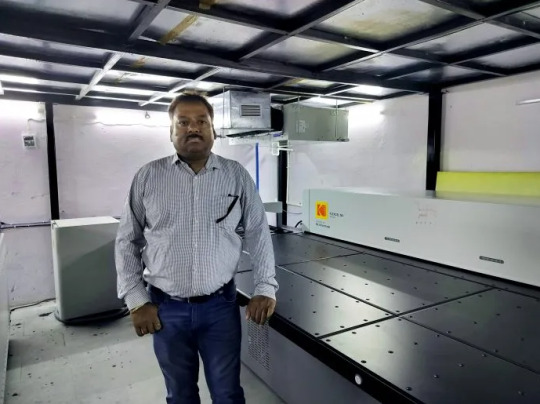
Prepress trade shop Flexone Graphics has invested in a Flexcel NX System and Flexcel NX Print Suite from Miraclon as part of its expansion with a second production site in Ahmedabad. The Flexcel NX Print Suite – now incorporated at its production site in Delhi – adds Miraclon’s UV Choice Printing for UV-printed narrow web applications and PureFlexo Printing for wide web flexible packaging to Flexone’s capabilities.
Both solutions employ Miraclon’s patented multi-form surface patterning technology and “continue our strategy of providing our customers with the unique, differentiated offerings necessary to stay ahead in today’s ever-changing market,” says Vimal Paliwal, director.
After successful careers in graphic design, Vimal and his brother Deepak, director, moved into prepress, initially providing offset prepress services from its Delhi facility. The company expanded into flexo prepress in 2017, installing a Flexcel NX Wide 4260 System.
After the Ahmedabad site opened in 2023, the company this year installed its second Flexcel NX Wide 4260 System to serve the demanding, quality-conscious narrow and wide web markets in the west of the country.
Straightforward decision
Deepak Paliwal says choosing the Flexcel NX System and Flexcel NX Print Suite for Ahmedabad was “a straightforward decision. The fact is, Flexcel NX Technology is the preferred choice for wide and narrow web printing, and a ‘must have’ if you want to stay competitive in a demanding market.”
Adds Vimal, “Our more discerning customers will specify Flexcel NX Plates for their work, because they recognize the on-press efficiency and quality advantages it has over LAMS plates. At the prepress stage, Flexcel NX Technology is 20-25% more productive because imaging is faster and high-quality jobs featuring vignettes and halftones, which test LAMS plates, are much simpler to render successfully. On the press, customers’ operators tell us Flexcel NX Plates come to color faster and produce more predictable results.”
Deepak Paliwal says, “The decision to move into flexo has proved a good move, as more and more brands are transitioning from offset to flexo. It used to be that only the larger brands were doing this, but now even smaller regional brands are switching to flexo for high-quality products with added on-shelf impact.”
Significant enhancements
Together, UV Choice Printing and PureFlexo Printing are tailored to significantly enhance Flexone Graphics’ capabilities on, respectively, UV flexo printed narrow web and wide web flexible packaging applications.
On a wide range of substrates, including foils, coated and uncoated labels, UV Choice Printing optimizes UV ink transfer and increases ink density by up to 15%. This eliminates troubleshooting quality issues on press and delivers better reproduction of solids, fine lines, crisp barcodes and text at lower ink volumes. It also simplifies and decreases set-up times by up to 20%.
Designed specifically for wide web solvent ink on film applications, PureFlexo Printing enables Flexcel NX System users to produce high-quality print within a wider operating window on-press. It does so by controlling unwanted ink spread — at the heart of many common flexo print problems — maximizing press efficiency, repeatability and overall performance, and contributing to cleaner print, stable color and a better bottom line for wide web flexible producers.
0 notes
Text
Understanding Barcodes: Creation, Functionality and Impact

Barcodes are ubiquitous in modern commerce and industry, streamlining everything from inventory management to checkout processes. These compact, visually distinctive symbols encode information in a machine-readable format, revolutionizing the way data is stored, accessed, and processed. This article delves into the concept of barcodes, their creation, and their significant role in various sectors.
What is a Barcode? A barcode is a visual, machine-readable representation of data. It consists of a series of parallel lines (bars) and spaces of varying widths that together represent encoded information. Barcodes can be scanned and interpreted by optical scanners or cameras, converting the visual data into a digital format that computers can process.
There are several types of barcodes, broadly categorized into: Linear Barcodes: The traditional format, consisting of a series of parallel lines. Examples include the Universal Product Code (UPC) and the European Article Number (EAN). 2D Barcodes: These barcodes can encode more information in a smaller space using patterns of squares, dots, or other shapes. Examples include QR codes and Data Matrix codes.
How is a Barcode Made? Creating a barcode involves several steps, from data encoding to physical printing. Here’s a detailed look at the process:
Data Encoding:
The first step in creating a barcode is determining the data to be encoded. This data could be a product number, serial number, or any other piece of information that needs to be quickly and accurately retrieved. The chosen data is then converted into a format suitable for the type of barcode being used. Different barcode symbologies (standards) dictate how data is encoded. For example, UPC codes use a specific pattern of bars and spaces to represent numbers.
Choosing the Symbology:
The type of barcode symbology depends on the application. UPC and EAN are common for retail products, while Code 39 and Code 128 are used in logistics and manufacturing. QR codes and Data Matrix codes are popular for marketing and information storage due to their high data capacity.
Generating the Barcode:
Specialized software or online tools generate the barcode image based on the encoded data and selected symbology. This software converts the data into the appropriate series of bars and spaces (or dots and squares for 2D barcodes).
Printing the Barcode:
The generated barcode image is then printed on labels, packaging, or directly onto products. This can be done using various printing technologies, such as inkjet, laser, or thermal printers. The key is ensuring that the barcode is printed clearly and accurately to ensure reliable scanning.
How Do Barcodes Work? Once a barcode is created and applied to an item, it can be read by a barcode scanner. Here’s how the scanning process works:
Scanning:
A barcode scanner emits a beam of light (usually a laser or LED) that sweeps across the barcode. The scanner detects the reflected light from the barcode’s bars and spaces. Different parts of the barcode reflect light differently: the bars absorb light, and the spaces reflect it. The scanner’s sensor detects these variations in light reflection.
Decoding:
The scanner converts the reflected light into an electrical signal, which is then processed to interpret the pattern of bars and spaces. This pattern is converted back into the original data encoded in the barcode. For example, in a retail setting, a UPC code is converted into a product number that the computer system recognizes.
Data Processing:
Once the barcode data is decoded, it is transmitted to a computer or point-of-sale system. The system uses this data to perform a specific action, such as retrieving product information, updating inventory levels, or processing a sale.
Applications of Barcodes:
Retail: Barcodes streamline the checkout process, reduce errors, and manage inventory. UPC and EAN codes are ubiquitous in retail environments, allowing for quick and accurate scanning of products at checkout.
Healthcare: Barcodes are used for patient identification, medication tracking, and inventory management in hospitals and pharmacies, ensuring patient safety and operational efficiency.
Logistics and Supply Chain: Barcodes facilitate tracking and managing goods throughout the supply chain, from manufacturing to distribution to delivery. They enhance accuracy, efficiency, and visibility in logistics operations.
Manufacturing: Barcodes help manage parts, track production processes, and ensure quality control in manufacturing settings.
Libraries and Asset Management: Barcodes simplify the tracking of books, equipment, and other assets, ensuring efficient check-in/check-out processes and accurate inventory management.
The Future of Barcodes
The evolution of barcode technology continues with advancements like Radio Frequency Identification (RFID) and Near Field Communication (NFC). These technologies offer additional benefits, such as longer range scanning and the ability to store more information. However, traditional barcodes remain indispensable due to their simplicity, cost-effectiveness, and widespread adoption.
Barcodes are a cornerstone of modern data management and logistics, offering a simple yet powerful way to encode, store, and retrieve information. From their creation to their myriad applications, barcodes have revolutionized industries by enhancing efficiency, accuracy, and convenience. As technology advances, barcodes will continue to play a vital role in shaping the future of data processing and management.
#point of sale#retail software#barcodescanners#retail billing software#retailsoftware#software#barcode printer
0 notes
Text
Embarking on the Voyage of Mobile App Innovation with Facial Recognition Mastery
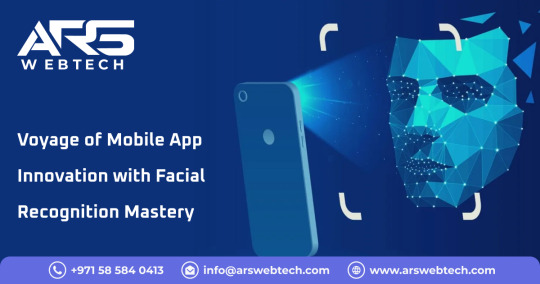
Is the concept of facial recognition technology a familiar whisper in your realm? This avant-garde methodology, pivotal in a multitude of smartphones for device activation and engagement, ushers in an epoch of enhanced personal safety, fortress-like security, and enriched user engagement. Let us delve deeper into this journey.
A staggering increase is forecasted, with over 1.4 billion individuals anticipated to employ facial recognition on their handheld devices by 2025, skyrocketing from 671 million in 2020.
Expansion Surge in Facial Recognition Tech
Why does Facial Recognition Technology ascend?
Indeed, navigating the complex and often debated domain of facial recognition is fraught with challenges. Nonetheless, the sector is flourishing, with ARS Webtech pioneers in Dubai leading a transformative shift. Its adoption extends across industries, endowing a plethora of applications with the capability of visual biometric discernment for a diverse array of tasks:
Biometric authentication for unequivocal identity confirmation
Automating the checkout flow in commercial ventures
Augmenting security in workplaces and educational domains
Client verification
Identifying patients
Enlightened banking practices
Uplifting public safety and enhancing product discovery via visual search
Crafting marketing endeavors with pinpoint accuracy
Detecting genetic conditions
Preventing fraud and enhancing retail security
Enabling cardless transactions at ATMs
Recognizing food through images
Amplifying engagement on social platforms
Harnessing Facial Recognition in Your Application
Before venturing into the creation of facial recognition applications, grasp the essence of the concept. What should your envisioned creation achieve? Here are three strategies to weave FRT into your mobile application post-mastering its fundamentals:
Three Pathways to Facial Recognition Integration in Your App
Leverage Native Face Detection APIs
Whether your aim is iOS or Android app development, or perhaps both, these platforms extend their APIs to assist in embedding facial recognition features into your application.
While these native solutions may limit functionality, they significantly reduce the development overhead for a facial recognition app. Integrating these APIs into your app is crucial for ensuring robust image detection and identification capabilities.
Native APIs shine with their optimization across multiple devices and enhancement through hardware acceleration. For instance, Apple’s Vision API, specializing in computer vision domains, offers detectors for text, barcodes, and faces.
Unleashing the Potential of Recognition: Navigating Mobile App Development with Facial Recognition Technology.
Consider the OpenCV Library
This library is a stalwart in the realm of facial recognition app creation, simplifying the integration of ML and computer vision into applications. OpenCV stands as a beacon for object detection, supporting myriad techniques for identifying various entities, including faces, with commendable efficacy.
Initially crafted to unify the interface of the computer vision field and expedite model innovation, OpenCV’s principal advantage is its cost-free nature. However, weaving it into mobile applications, particularly Android’s facial detection, demands profound expertise.
Opt for a Third-Party Service
A plethora of third-party services exists, offering streamlined and convenient development pathways. Services like Amazon Rekognition, Microsoft Face API, Google's Cloud Vision API, and Kairos can supercharge your applications with FTR capabilities, identifying emotions, ethnicity, and more beyond mere facial recognition. These services, generally subscription-based, promise remarkable functionality.
The Forefront APIs for Facial Recognition in Mobile Applications
APIs stand as pillars supporting business growth. Hence, employing an API for facial recognition app development is ideal, enhancing developer efficiency and enabling the deployment of innovative solutions at reduced costs.
Among the leading facial recognition APIs are:
Microsoft Face API, renowned for its facial and emotion recognition capabilities, empowering apps to identify and categorize faces and their associated emotions.
Kairos API, celebrated for its swift and secure face detection, powered by machine learning algorithms.
Amazon Rekognition, rooted in deep learning technology, allows for expansive analysis without necessitating ML expertise.
ARS Webtech: Pioneers in Web App Development
At ARS Webtech, we excel in crafting state-of-the-art web applications tailored to your unique requirements. Discover the transformative power of bespoke web applications and enhance your digital footprint with our expertise. Reach out for unparalleled web app development services.
In Conclusion
Facial recognition is steadily cementing its place in mobile device security and user experience enhancement. ARS Webtech, at the forefront of mobile app development, continues to pioneer in real-time facial recognition applications, with our latest innovations marking significant success. Explore the possibilities facial recognition technology offers for your applications by connecting with us.
#App Development Company in Dubai#Mobile Application Development Company#Mobile App Development Company Dubai#Mobile App Development Company Abu Dhabi#Mobile App Development Company UAE#Mobile App Development Services#Mobile App Development Sharjah#Custom App Development Company in Dubai#IOS App Development Company In Dubai#mobile app innovation in Dubai
0 notes
Text
Five Crucial Elements of a Book's Back Cover Design

The book's back cover is one of the significant elements that has the power to instill curiosity in the readers to know more about the book. The back cover mainly serves information about the book’s author, the story, and the credible reviews of the book. Since a book's back cover length is limited, one needs to be extremely innovative and creative in designing the back cover and to determine what information to include and what to eliminate. This also depends on the genre of the book one is working on. The following article will discuss the five most important elements of the book's back cover.
1. Testimonials
Testimonials from well-recognized persons whom your readers are familiar with are very important. You must not include testimonials from people who are not known to the larger audience of your book since that is not a credible source. However, it is challenging to make connections or convince popular writers to provide testimonials for your book.
You can do three things to create connections with important and valuable people who would contribute to your book’s back cover:
Attend paid seminars/workshops and approach them directly to provide feedback on the book.
Connect with people through LinkedIn if your profile matches and then politely request them to provide testimonials.
Make an appointment for a one-on-one session with them and advance your request and if you are familiar with them through work then it is an added advantage.
It is also beneficial for them if your book runs well in the market. They will become famous and their books will also get promoted as there will be mention of their work along with their name at the back of your book.
2. Blurbs
The main purpose of blurbs is to ignite the interest of the readers instead of providing them with a synopsis of the book. The blurbs must be communicative and should resonate with audiences’ needs and problems.
On the other hand, one has to be careful enough to not reveal any secrets. For instance, a blurb for a skincare book might include something that speaks directly about the problem of the intended audience and conveys how this book is going to help them in solving their problem without revealing essential information regarding skincare solutions that are discussed in the book.
Author's Biography
The author's bio is a mandatory element of the book's back cover as it informs readers about your qualifications and expertise in your niche area. The bio must be written from a third-person perspective. You can include personal information like where you grew up, your educational background, family backgrounds, significant life events that might have influenced you to become a writer, and also if there are any particular incidents or events and emotions behind writing the book is good to be included to provide context to the reader.
Author's Headshot
The author's headshot is a mandatory picture of the author. It is recommended that for non-fiction a formal black and white photograph must be used since the reader of a non-fiction book has a certain impression of the author.
For instance, a lawyer or a doctor has a specific image of people and might expect a formal picture of the author. Additionally, the picture must be taken by a professional photographer who can maintain the standard of book headshot photography.
Barcode
The last important element of your book’s back cover is the barcode which needs to be placed and sized appropriately to fit the book cover length. Also, you must ensure that the barcode is properly placed so that the retailers do not find any problem in scanning the barcode.
End Note
The book’s back cover entails some of the most important elements that determine the sale of the book. The elements on it provide crucial information to the readers regarding the book and the author and more importantly book reviews by experts. To ensure your book makes its way into the market successfully, you need to be extremely careful and creative with your book’s back cover.
0 notes